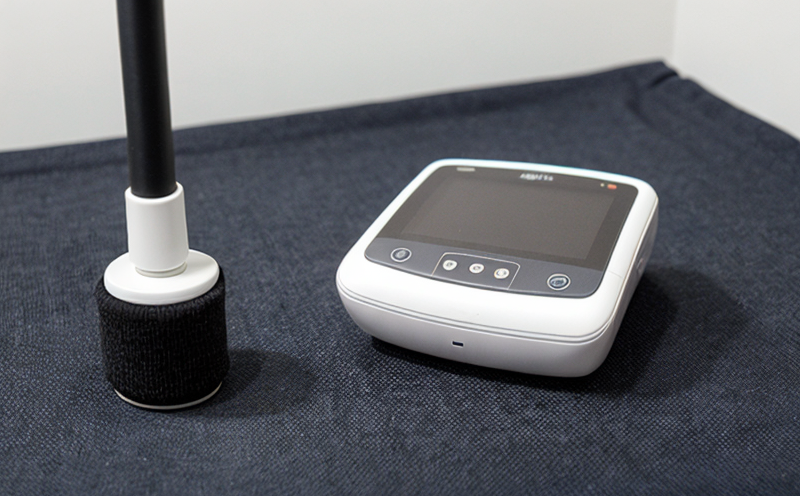JIS L1902 Antibacterial testing of sensor integrated medical fabrics
The JIS L1902 standard is a crucial benchmark for evaluating the antibacterial properties of textiles, especially in the healthcare sector. This service focuses on testing sensor-integrated medical fabrics to ensure they meet stringent hygiene and safety standards.
Antibacterial testing is essential because it ensures that medical textiles do not contribute to the spread of infections. In hospitals and clinics, where hygiene is paramount, any fabric used in patient care must be free from harmful microorganisms. The JIS L1902 standard provides a standardized method for assessing bacterial reduction levels on fabrics after treatment.
For sensor-integrated medical fabrics, the challenge lies not only in ensuring antibacterial properties but also in preserving the integrity of the sensors and their functionality. These textiles are often used in wearable health monitors or in clothing designed to provide continuous monitoring of vital signs. Therefore, the testing process must be meticulous and precise.
The test procedure involves exposing the specimen fabric to a specified bacterial strain under controlled conditions. After an incubation period, the sample is washed according to the manufacturer's instructions or industry best practices, followed by drying. The antibacterial activity of the treated fabric is then evaluated through quantitative methods such as colony-forming unit (CFU) counting.
The JIS L1902 standard specifies that at least 99% bacterial reduction should be achieved within a specified time frame for the fabrics to pass the test. This stringent requirement ensures that any medical fabric, whether it's used in patient gowns, bed linens, or sensor-integrated garments, is safe and effective in preventing the spread of infections.
For R&D engineers working on developing these types of textiles, this service provides a critical quality assurance step. It helps them refine their products to meet not only JIS L1902 standards but also other international guidelines such as ISO 20743 for medical devices and personal protective equipment.
Compliance officers benefit from this testing because it ensures that the fabrics used in their facilities comply with regulatory requirements. This service supports them in maintaining a clean, safe environment by providing data that demonstrates adherence to industry standards.
Quality and Reliability Assurance
The quality assurance process for JIS L1902 testing of sensor-integrated medical fabrics is comprehensive. Before any test can be conducted, the specimen must undergo rigorous preparation to ensure it accurately represents the fabric in use.
- Specimens are sourced directly from prototypes or production batches.
- The specimens are cut into standardized dimensions and shapes as per JIS L1902 specifications.
- Pre-treatment is carried out according to the manufacturer's guidelines, which may include washing, drying, or conditioning processes.
The testing itself involves several steps. First, the specimen is exposed to a known bacterial culture under controlled environmental conditions. After an incubation period, the sample undergoes repeated washings and drying cycles consistent with typical usage in healthcare settings. The bacterial load on the fabric before and after treatment is then quantified using CFU methods.
The data collected from these tests are meticulously recorded and analyzed to determine compliance with JIS L1902 standards. Any deviations from the required 99% bacterial reduction must be investigated further, potentially leading to adjustments in the manufacturing process or treatment protocols.
Reliability is ensured through repeated testing under consistent conditions. This not only provides robust data but also helps identify any inconsistencies in the fabric's performance over time and across different batches.
Environmental and Sustainability Contributions
- The use of sensor-integrated medical fabrics can reduce the need for frequent replacements, thus lowering waste generation.
- By ensuring high antibacterial properties, these textiles help in reducing hospital-acquired infections (HAI), which in turn decreases the overall environmental impact associated with treating more patients.
The JIS L1902 standard supports sustainability by promoting the development of fabrics that are not only effective but also environmentally friendly. This service helps manufacturers design products that are durable, easy to clean, and recyclable, contributing positively to the circular economy.
Use Cases and Application Examples
| Use Case | Application Example | Benefits |
|---|---|---|
| Wearable Health Monitoring Devices | Sensor-integrated fabrics used in patient gowns and bed linens. | Continuous monitoring of vital signs, early detection of infections. |
| Personal Protective Equipment (PPE) | Fabric incorporated into surgical masks and gloves. | Better protection against pathogens, improved hygiene standards. |
| Home Healthcare Products | Sensor-integrated clothing for the elderly or patients with chronic conditions. | Enhanced home care monitoring and support systems. |





